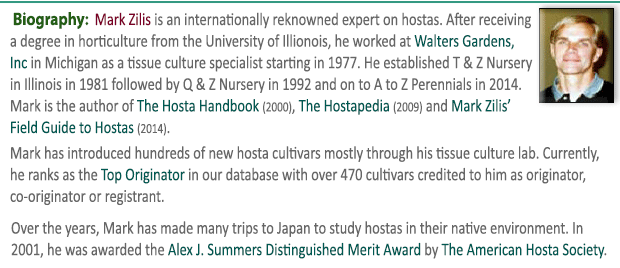|
  This
variety of the species from
Japan is noted for growing in moist, swampy regions
which was first identified by
Dr. Fumio Maekawa around 1940. This
variety of the species from
Japan is noted for growing in moist, swampy regions
which was first identified by
Dr. Fumio Maekawa around 1940.
It is a miniature size hosta only growing about 4
inches high with a spread of around 15 inches. The medium green leaves are very
narrowly elliptic, shiny on top and have smooth texture. Pale lavender flowers
with 4 or 5 blossoms per scape bloom in September.
According to
The Hostapedia by Mark Zilis (2009), "Its strap-like foliage appears much closer to that of a
Liriope than a hosta...The flowers, too, set this plant apart from other hostas. It only
produces 4-5 flowers per scape, making for one of the shortest hosta blooming
seasons."
Mikiko Lockwood in an article on The Hosta Library titled,
A Little About Japanese Hosta Terms defines the term hosoba
as narrow leaf and the term mizu as water, 'Mizu Gibōshi' or
H. longissima.


 |



